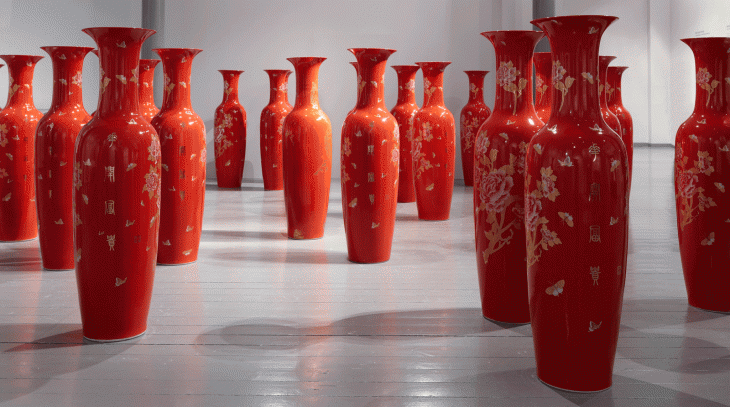A friend of mine once owned a vase by the potter Hans Coper — until, that is, her teenage son had his friends around for a party. It wasn’t clear who knocked it off the shelf, but it was an expensive accident; a similar Coper pot sold last month at auction for almost £400,000. But then the tricky thing about studio pottery is where to put it — in more senses than one.
It isn’t just whether it will be safer on the mantelpiece or in a cupboard. There is also the problem of how to categorise the stuff: is it art or is it craft, and what’s the difference? Such conundrums perplexed me as I walked around Things of Beauty Growing at the Fitzwilliam Museum, Cambridge.
This is billed as ‘British studio pottery’, but quite a few of the exhibits, including several of the most beautiful, were made in the Far East about 1,000 years ago. A Song dynasty vase near the beginning is as refined and elegant as an abstract sculpture by Brancusi. And indeed that was much how the aesthetes of London thought about their oriental ceramics. Roger Fry, the artistic guru of Bloomsbury, extolled a Song dynasty bowl for the ‘perfect sequence’ of its curves.
Some early 20th-century Britons began making similar objects themselves. Bernard Leach (1887–1979) spent more than a decade living and studying in Japan before returning to Britain in the 1920s and setting up a pottery in St Ives. He formed close friendships with Japanese potters, including Shoji Hamada who worked with him in Cornwall for three years (and thus features in this exhibition).
Another pioneering British student of Far Eastern ceramics was William Staite Murray (1881–1962). A convert to Buddhism, Staite Murray had an almost mystical approach to pottery. Oscar Wilde, you will recall, lamented that he found it ‘harder and harder every day’ to live up to his blue and white Chinese porcelain. Staite Murray suggested that cultures could be judged by their pottery; it was the purest art, the best guide to the ‘finesse’ of a country’s sensibility.
His own best efforts, such as ‘Very Tall Pot’ (1937), with its faint suggestion of a human silhouette — bulging at the shoulder and waist, narrowing at the neck — are in the class of contemporary sculptures by Hepworth and Moore. The same is true of Leach’s work. In his case, some of the most appealing pieces emulated the rustic brown and cream earthenware made in 17th-century England. His ‘Charger, Tree of Life’ (1923–25) is wonderfully romantic, woody and, well, English (though Shoji Hamada also worked happily in this idiom).
Leach, Staite Murray and their successors — such as Katherine Pleydell-Bouverie and Norah Braden — made many of the most successful pieces at the Fitzwilliam. Collectively, they seem to have regarded pottery as a sort of spiritual exercise: Zen and the art of throwing pots, you might say. Michael Cardew, a Leach pupil and another master, talked of seeing beautiful things ‘growing up in front of you’ without conscious intention — that is, if you were lucky and respected your materials, and lived a long time (as many of them did).
Unfortunately, studio pottery is not all about subtlety and Zen. Its potential for ghastliness is suggested by a group of Victorian vases designed by Christopher Dresser. These have a horrible, triffid-like vigour. Some of the later pieces at the Fitzwilliam are just horrid, without the manic vitality.
On this evidence, it is bad for potters to think of themselves as artists (they may sometimes make works of art, but that is a different matter). The closer they come to doing the kind of things that painters and sculptors usually do, the more awkward the results. There are, admittedly, a few exceptions. Grayson Perry can get away with it, but then he actually is an artist. Hans Coper, I admit, was able to make vases with the force of a figure by Giacometti.
For the most part, though, it’s much better if potters make items in which — at least theoretically — you might place flowers, soup or coffee (as both Perry and Coper do). When they roam into the area of installation, or fashion nameless abstract objects, the question arises with which I began: where on earth do you put this?






Comments